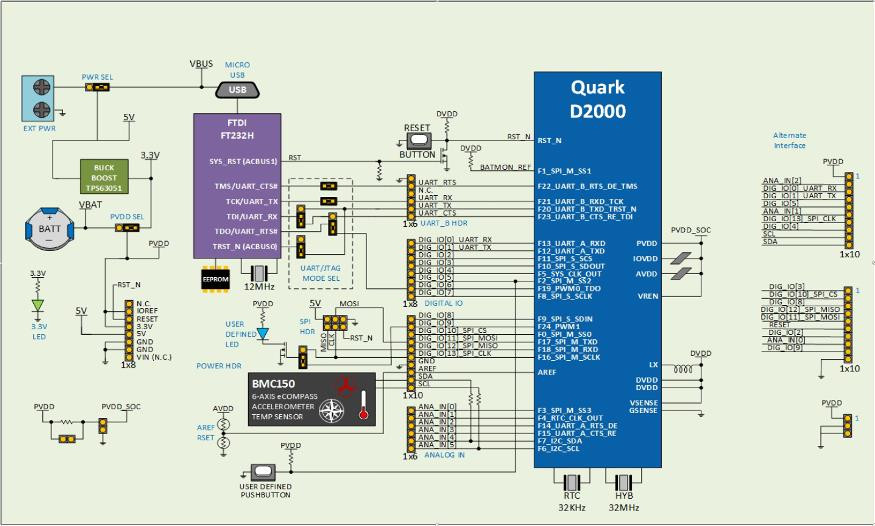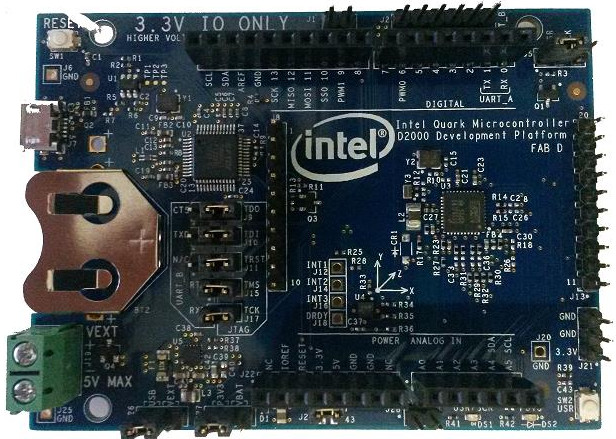Intel introduces three new Quark Micro-controllers last year, and I already experimented with Intel System Studio tools, quite similar to the Arduino IDE, and designed for hardware such as Intel Quark D1000 Customer Reference Board. So far the company had not released any boards available to the general public, but this has now changed since they’ve launched the “Intel Quark Microcontroller Developer Kit D2000”.
Intel Quark D2000 development board specifications:
- MCU – Intel Quark D2000 32-bit processor Intel Pentium x86-compatible without x87 FPU @ 32 MHz with 8 KB SRAM, 32 KB instruction flash, 8 KB OTP flash and 4 KB OTP data flash
- USB – 1x micro USB (JTAG) for power and programming/debugging
- Sensors – 6-axis Accelerometer / magnetometer with temperature sensor (Bosch Sensortec BCM150)
- Expansion options:
- Arduino Uno compatible SIL sockets (3.3V IO only)
- Booster pack compatible SIL headers (3.3V IO only)
- Misc – Reset and user buttons, jumpers, RTC
- Power Supply
- External (2.5V – 5V) DC input via screw terminal
- USB power (5V) via debug port
- Coin cell battery (type CR2032 not supplied)
- Dimensions – 8.4 x 5.7 cm

The board can also be developed with Intel System Studio for Microcontrollers IDE with support for GCC 5.2.1, Intel-enhanced GDB 7.9, Integrated Performance Primitives for Microcontrollers 1.0, Floating Point Emulation library, sample applications, a BSP for the Intel Quark Microcontroller Software Interface (Intel QMSI)
OpenOCD 0.8.0, TinyCrypt 0.1.0, Python 2.7.10, and more. The IDE works in Linux 64-bit (Ubuntu 14.04 LTS, and Fedora 21), and Windows 7/8.1/10 64-bit. All manufacturing and hardware design files have been released (Cadence Allegro), and documentation includes hardware and user’s guides.
The board can be purchased for $14.95 on Mouser, and you can visit Intel Quark Microcontroller D2000 product page for more details about the MCU and the development board, including all documentation.

Jean-Luc started CNX Software in 2010 as a part-time endeavor, before quitting his job as a software engineering manager, and starting to write daily news, and reviews full time later in 2011.
Support CNX Software! Donate via cryptocurrencies, become a Patron on Patreon, or purchase goods on Amazon or Aliexpress





